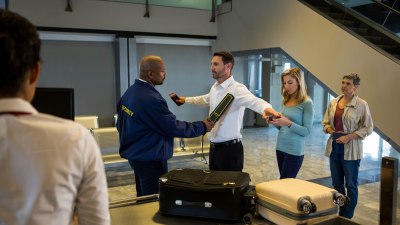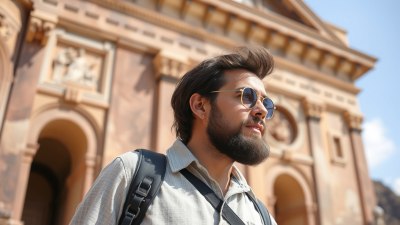The Airport Security Line is Just a Trust Exercise
Explore how airport security reflects societal trust and cooperation in modern travel.

Image by wavebreakmedia_micro on Freepik
In a world increasingly filled with uncertainty and rapid change, the airport security line serves as an interesting case study in human behavior, societal norms, and collective trust. While some passengers approach this ubiquitous experience with annoyance or impatience, others recognize it as a profound reflection of our time. Beyond the scanning machines and the regulation of liquids lies the essence of trust—a social contract between individuals and the systems in place to keep them safe.
The Genesis of Airport Security
Airport security has evolved significantly over the decades, responding to both technological advancements and escalating global threats. The landscape of air travel changed drastically after the events of September 11, 2001, leading to the implementation of stringent security measures worldwide. Passengers now tread through checkpoints designed to indulge in a delicate balance: fostering safety while upholding efficiency. Yet, what's inherently fascinating about this process is the element of trust that permeates each interaction. As travelers remove their shoes, belts, and laptops, they submit themselves to protocols that are both familiar and invasive.
Trust in Systems
At the core of the airport security experience is the inherent trust that passengers place in the systems—airports, airlines, and governmental agencies. This trust is multifaceted: it encompasses faith in the technology that screens luggage for explosives or weapons, belief in the competency of security personnel, and confidence in the legality of procedures. Travelers are asked to comply with a series of seemingly irrational commands—removing shoes, going through body scanners, and submitting to random checks—all without asking many questions. This act of compliance necessitates an unwavering belief that the entire system is both ethical and effective. Each passenger's willingness to follow mandates is crucial for the success of airport security. A single individual opting out or resisting can disrupt the flow, leading to delays that can affect hundreds on any given day.
Collective Responsibility
The airport security line is more than just a series of individual decisions; it embodies the concept of collective responsibility. We acknowledge implicitly that our actions—not just our own but those of fellow passengers—contribute to overall security. This interdependence is central to the notion of trust during air travel. When waiting in line, people often glance at one another, establishing an unspoken agreement to maintain patience and decorum. The traveler next to you is inherently recognizing that they are in it collectively with you. Any sign of disorder or a hint of anxiety can ripple through the line, transforming the atmosphere from calm to fraught in seconds. This dynamic reflects broader societal behaviors, where the actions of one can impact the whole. The mutual recognition of the need for cooperation plays a vital role in defining the entire travel experience.
Coping with Anxiety
Yet, anxiety is also a prevailing emotion within these lines. For many, the experience can feel overwhelming—especially for those who may have heightened fear of government intervention or for marginalized groups who may feel heightened scrutiny. It leads us to contemplate the psychological impact of such scenarios. While regulations are designed with safety in mind, the intrusion into personal space and privacy can evoke feelings of vulnerability. Every beep of the scanner or swipe of security personnel can feel like a reminder of the threat we are trying to mitigate. Amidst this, people navigate their personal coping mechanisms to manage anxiety. Some engage in distracting conversations with fellow passengers, while others bury themselves in their phones or boarding passes. Pets or children in tow add another layer of experience, forcing parents to balance reassurance and responsibility.
The Role of Technology
Apart from the human elements of trust and cooperation, technology plays an undeniable role within airport security. The advancements within screening technologies have transformed how travelers are processed, often leading to faster and more efficient experiences. Yet, while new systems aim to enhance the sense of security, they also introduce complexity. Many passengers might find themselves in unfamiliar situations: the intricate dance of the full-body scanner, the new molds of Non-Intrusive Inspection systems, and advanced threat detection software. Each new technology demands to gain both public trust and understanding. This introduces yet another facet of the trust exercise at hand; trusting not only human agents but also the silent machines that accompany them. When a passenger steps into the scanner, they have to trust that the technology will work efficiently, and that the results will be interpreted correctly. Every element of the airport security line relies on a mutual exchange of trust: the government trusts passengers to comply, and passengers trust that they will be treated fairly in return.
Societal Reflections
In broader society, moments of collective anxiety often lead to increased security measures. The airport security line may serve as a microcosm for our own complexities; within, lies reflections of fears, vulnerabilities, and the innate desires for safety and connection. Lessons gleaned from security lines often transcend airport walls, revealing human behaviors in varied scenarios. The strategies we employ to cope with stress, the willingness to trust others, and the underlying need for community epitomize the human experience. Ultimately, just as we upload our identities at security checkpoints, we also lay bare elements of our society, wherein strangers become allies in shared hopes for safety. We practice resilience, patience, and trust within these lines, knowing that the sum of our behaviors contributes to a much larger narrative.
So, while the airport security line can indeed feel like a tedious obstacle, it is profoundly more. It reflects collective effort, societal values, and the fundamental human instinct to cultivate trust, even amidst discomfort. With every swipe of a boarding pass and the muted buzz of machinery, we are not just engaging in a mere routine; we are participating in a societal trust exercise. It compels us to reflect on the greater picture of safety in an increasingly uncertain world. It challenges our feelings, builds interconnectedness, and ultimately showcases the strength of our willing cooperation. In the grand tapestry of human experience, the airport security line serves as a poignant reminder—safety is inherently relational and depends upon a continuum of shared trust between individuals and systems.











